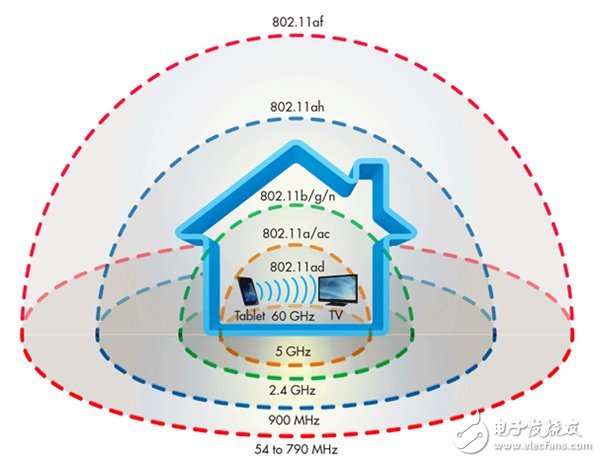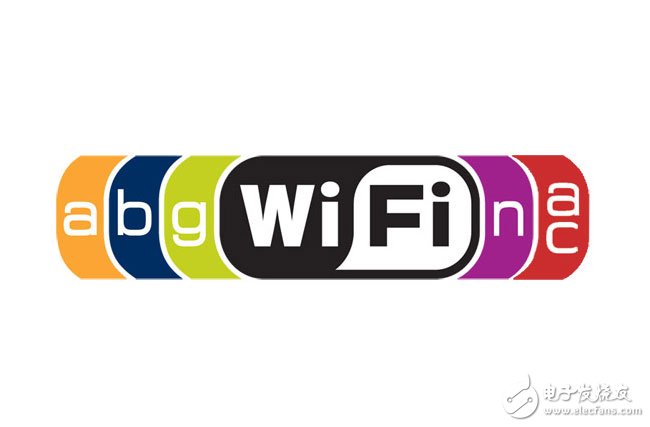How to choose a router through the wifi standard?
Wifi has long been an indispensable part of modern life, and the wifi standard itself has also undergone progress. With the release of 802.11 ad, Xiao Bian firstly introduces the existing standards of 802.11 a/b/g/n/ac for everyone, and also introduces the more powerful ax, ay, ah standards that have not yet been released, and finally There are very practical tips for choosing a router for everyday use.
What does 802.11 mean?Let us first explain what is 802. This naming system actually uses some network standards that you may be familiar with. The Ethernet naming starts with 802.3, while the Bluetooth prefix is ​​802.15 and Wifi is 802.11. All different wifi standards will be named after 802.11, followed by a consumer's perspective that helps them distinguish one or two letters of their respective attributes.
To help ensure compatibility with different hardware and networks, most products support multiple protocols simultaneously. Lists such as smartphones like wifi802.11 A / B / G / N / AC and other spec sheets have included all of the oldest and most common modern standards.
Most of the new standards are only used to help with the definition of improvements, mainly in terms of speed improvements. Recently, wifi has been split into some completely different branches. Below is a comparison breakdown of the most commonly used versions:

In the past revisions, the most important WiFi standard was 802.11ac, which dramatically increased the speed of data transfer. It can reach 1 Gbit / s, the fastest WiFi version available so far. The 802.11ac standard also operates in the 5 GHz band, with higher frequencies and faster speeds than the 2.4 GHz 802.11n or g.
Recently, according to foreign media reports, Wifi new standard 802.11 ad released, the speed of wireless networks will be raised to a new height.
802.11 ad is not released by the IEEE, but is released by the WiGig Alliance. This standard was proposed as early as 2009, the 2011 draft standard was completed, and it was officially promulgated in 2016. 802.11 ad knows that it is not IEEE, because it uses a new frequency band, which is different from all previous Wifi standards. 802.11b/g/n/ac uses the 2.4GHz or 5GHz band, and the subsequent 802.11 ad will use the 60GHz band. The 60 GHz band can transmit more data, but the distance that can be transmitted is shorter.

Source: Arstechnica
That is to say, when the frequency is higher or the wavelength is shorter, the range of the receivable signal is smaller, and the data transmission range of 802.11 ad is the smallest in the above figure. When a router adopts the 802.11 n/ac standard, the transmission range of this router may be small, and it can only be used by households or small businesses. If it is 802.11 ad, the transmission range may be as large as a living room, and there is no signal when going out. Therefore, many routers are double-packed, which can be adjusted according to the user's signal strength. Nearly, the 5GHz signal is used to increase the transmission speed. When it is far away, it is switched to 2.4GHz to improve the transmission distance and keep the signal stable.
What are the stronger wifi standards in the future?
802.11 ax
802.11 ad is not the ultimate Wifi standard, followed by 802.11 ax. 802.11 ax is a standard for mixing 2.4GHz, 5GHz and 1024AQM, OFDMA signals. The current laboratory test speed is up to 10Gbps, which is twice as fast as 802.11 ad. It takes only 6.4 seconds to download an 8GB 1080P HD movie. . 802.11 ax is expected to be available in 2019.
802.11 ay
802.11 ax is followed by 802.11 ay, an upgraded version of 802.11 ad. 802.11 ay has added support for MU-MIMO with a maximum speed of 20-40 Gbps and a 10.8 second download of a 27GB Blu-ray movie. At the same time, the transmission distance has reached a terrible 300-500 meters. 802.11 ay is expected to come out in 2017, and the second batch of tri-band routers will join in support.
802.11 ah
There is also an 802.11 ah standard that is similar to Bluetooth. It uses the same 1GHz band as Bluetooth, but the signal range can reach 1000 meters, and it has very low power consumption, but this comes at a price, 802.11 ah signal rate. Only 150Kbps. Downloading a 5M music takes nearly 5 minutes.
In addition, there is an 802.11 ah standard, the frequency band is as low as 54MHz-790MHz, and the signal transmission range is extremely wide. However, this standard may not be used by the home and may be used in device authentication, wireless TV.
How to choose a router through the wifi standard?In the past, people chose routers based on their size. Larger homes use 2.4GHz routers, and smaller ones use 5GHz routers. Now the performance improvement of the router can solve the problem of frequency band switching well. However, the first batch of tri-band routers has a problem, that is, three bands have three SSIDs, and it is impossible to switch bands in the same SSID. Maybe it can be solved by firmware upgrade later, just a temporary problem.
Xiao Bian said that if there are conditions, support for 60GHz tri-band routers, you can still buy. Because today's routers have a very powerful computing power, they can handle the switching of multiple signal bands.
This article refers to Transcend
Rice Mill,Rice Polisher,Rice Sheller,Mobile Rice Mill
HuangShi Stee Metal Material Technology Exploitation Co.,Ltd , https://www.wosenstechnology.com